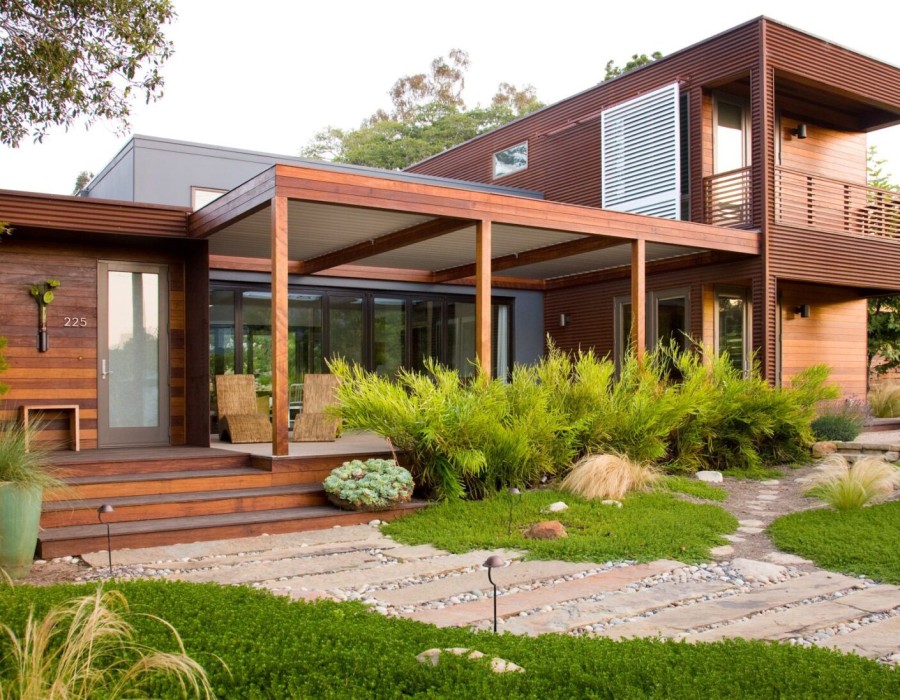Introduction
Sustainable architecture is a growing trend that focuses on designing and constructing homes with minimal environmental impact. By integrating energy-efficient features, utilizing eco-friendly materials, and adopting innovative design strategies, sustainable architecture aims to create homes that promote a healthier and more sustainable lifestyle. In this article, we will explore the key principles and guidelines for designing Sustainable architecture for eco-friendly homes.
1. Understanding Sustainable Architecture
Sustainable architecture focuses on minimizing the negative impact of buildings on the environment while creating comfortable and functional living spaces. It takes into account factors such as energy efficiency, water conservation, use of eco-friendly materials, and integration of renewable energy sources.
2. Energy-Efficient Design
Energy efficiency is a key aspect of sustainable architecture. By implementing the following design strategies, homes can significantly reduce energy consumption:
1. Passive Design Strategies
Passive design techniques take advantage of natural elements such as sunlight, wind, and shading to optimize thermal comfort. Examples include orienting the building to maximize natural light, incorporating natural ventilation systems, and utilizing shading devices to reduce heat gain.
2. Optimized Insulation
Proper insulation plays a crucial role in reducing energy loss and maintaining a comfortable indoor temperature. Insulate walls, roofs, and floors using high-quality insulation materials to minimize heat transfer.
3. High-Performance Windows
Choose energy-efficient windows with low emissivity (low-E) coatings and double or triple glazing to minimize heat loss or gain. These windows help maintain a consistent indoor temperature and reduce the need for artificial heating or cooling.
4. Efficient Lighting Systems
Utilize energy-efficient lighting solutions such as LED bulbs and fixtures. Incorporate natural daylighting strategies by designing larger windows and skylights to reduce reliance on artificial lighting during the day.
3. Eco-Friendly Materials
Choosing sustainable and eco-friendly materials is essential for reducing the environmental impact of a home. Consider the following options:
1. Use of Recycled and Reclaimed Materials
Incorporate recycled or reclaimed materials in construction, such as recycled metal, reclaimed wood, or salvaged bricks. This reduces the demand for new materials and minimizes waste.
2. Sustainable Timber
Opt for timber sourced from responsibly managed forests with certifications like FSC (Forest Stewardship Council). Look for alternatives to tropical hardwoods, which are often associated with deforestation.
3. Low-VOC and Non-Toxic Finishes
Select paints, varnishes, and adhesives that have low volatile organic compound (VOC) content to minimize indoor air pollution and promote better indoor air quality.
4. Water Management
Efficient water management is crucial for sustainable architecture. Implement the following practices to conserve water:
1. Rainwater Harvesting
Collect rainwater from roofs and store it in tanks for various non-potable uses such as irrigation, toilet flushing, and laundry.
2. Efficient Plumbing Fixtures
Install water-saving plumbing fixtures such as Sustainable architecture for eco-friendly homes low-flow toilets, water-efficient showerheads, and faucets. These fixtures reduce water consumption without compromising functionality.
3. Greywater Recycling
Implement a greywater recycling system to reuse water from sinks, showers, and laundry for irrigation purposes. This reduces the demand for freshwater and minimizes wastage.
5. Incorporating Renewable Energy
Integrating renewable energy sources further enhances the sustainability of a home. Consider the following options:
1. Solar Power
Install solar panels on the roof to generate clean and renewable electricity. Solar power can be used to power various electrical systems and appliances in the home.
2. Wind Energy
In suitable locations, small wind turbines can be installed to harness wind energy and generate electricity. This can supplement the power needs of the home.
3. Geothermal Systems
Geothermal heat pumps utilize the stable temperature of the ground to provide heating and cooling. These systems are highly efficient and environmentally friendly.
6. Biophilic Design
Biophilic design integrates elements of nature into the built environment, promoting a connection with the natural world. Incorporate features such as indoor plants, natural materials, and ample daylight to enhance occupants' well-being and productivity.
7. Conclusion
Designing sustainable architecture for eco-friendly homes is a holistic approach that considers energy efficiency, eco-friendly materials, water management, renewable energy, and biophilic design. By implementing these principles and guidelines, we can create homes that not only reduce environmental impact but also provide a healthier and more sustainable living environment.





Comments